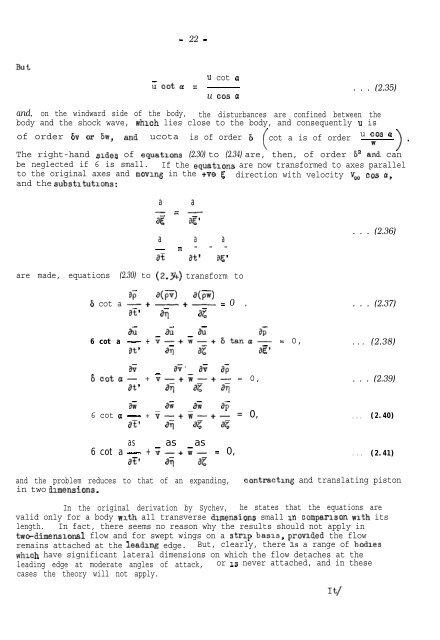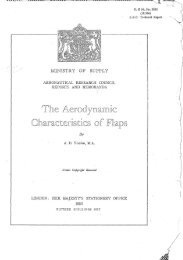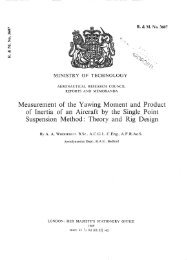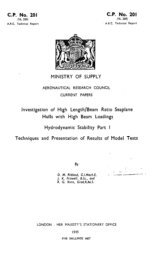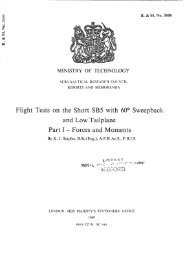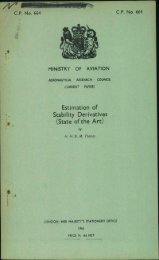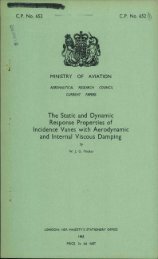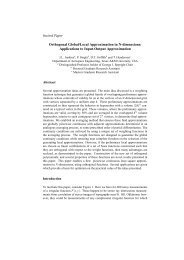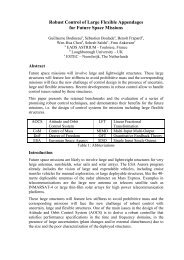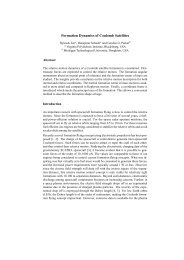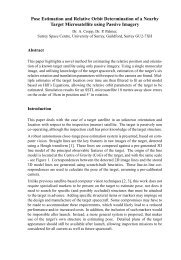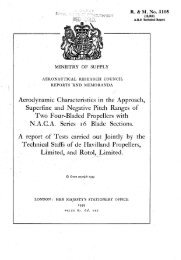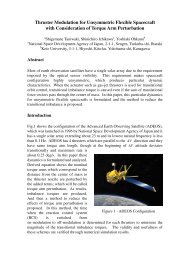A Survey of Unsteady Hypersonic Flow Problems
A Survey of Unsteady Hypersonic Flow Problems
A Survey of Unsteady Hypersonic Flow Problems
Create successful ePaper yourself
Turn your PDF publications into a flip-book with our unique Google optimized e-Paper software.
- 22 -<br />
u cot cl<br />
ucota = . . . (2.35)<br />
u co3 a<br />
and, on the windward side <strong>of</strong> the body, the disturbances are confined between the<br />
body and the shock wave, which lies close to the body, and consequently u is<br />
<strong>of</strong> order 6v or 6w, and ucota is <strong>of</strong> order 6<br />
( cot a is <strong>of</strong> order u co3 a<br />
The right-hand sdes <strong>of</strong> equations (2.30) to (2.34) are, then, <strong>of</strong> order 6' a!d can<br />
be neglected if 6 is small. If the equations are now transformed to axes parallel<br />
to the original axes and moving in the +ve F; direction with velocity V, cos a,<br />
and the substltutlons:<br />
are made, equations (2.30) to<br />
JF<br />
6 cot a -+<br />
at'<br />
6 cot a - +<br />
at*<br />
JY<br />
Scota- +<br />
at'<br />
ai<br />
6 cot a - +<br />
aT1<br />
as<br />
6 cot a - +<br />
aP<br />
a a<br />
-=-<br />
G a?51<br />
a a a<br />
- = --ax<br />
at* a~;'<br />
(2-S) transform to<br />
a(i;s) J(F)<br />
-+- = 0 ,<br />
a? JE<br />
JG JG 6<br />
Y--++-++t.tana- = 0,<br />
JY aE aP<br />
_ ai;, a7 ap<br />
v-+w-+- = 0,<br />
aiy JZ JYj<br />
a: aii ap<br />
;--+;---+- = 0,<br />
a? JZ aZ<br />
as as<br />
v-+w- = 0,<br />
aij aZ<br />
. . . (2.36)<br />
. . . (2.37)<br />
. . . (2.38)<br />
. . . (2.39)<br />
. . . (2.40)<br />
. . . (2.41)<br />
and the problem reduces to that <strong>of</strong> an expanding, contracting and translating piston<br />
in two dunensions.<br />
In the original derivation by Sychev, he states that the equations are<br />
valid only for a body wxth all transverse dunensions small In comparison with its<br />
length. In fact, there seems no reason why the results should not apply in<br />
two-dimensional flow and for swept wings on a strip basu, provded the flow<br />
remains attached at the leading edge. But, clearly, there 1s a range <strong>of</strong> bodzes<br />
which have significant lateral dimensions on which the flow detaches at the<br />
leading edge at moderate angles <strong>of</strong> attack, or IS never attached, and in these<br />
cases the theory will not apply.<br />
>*


